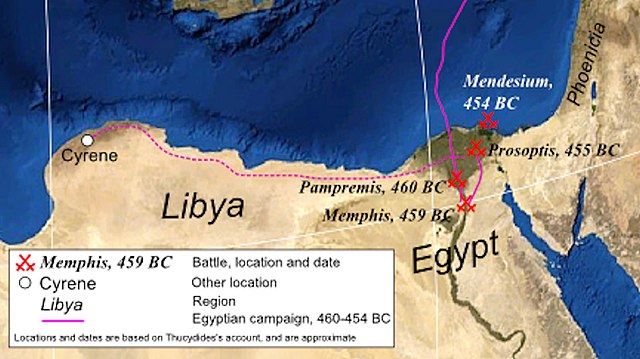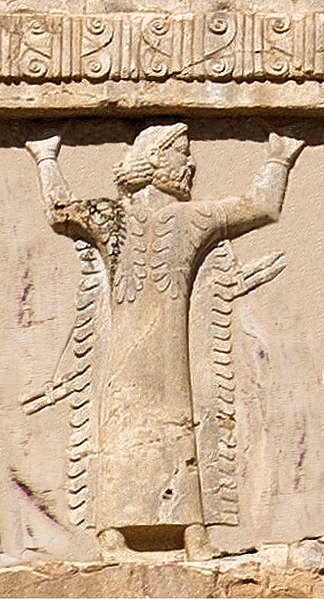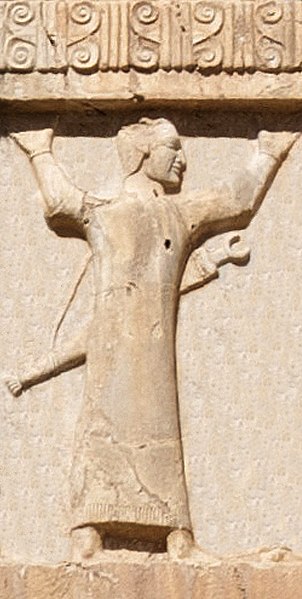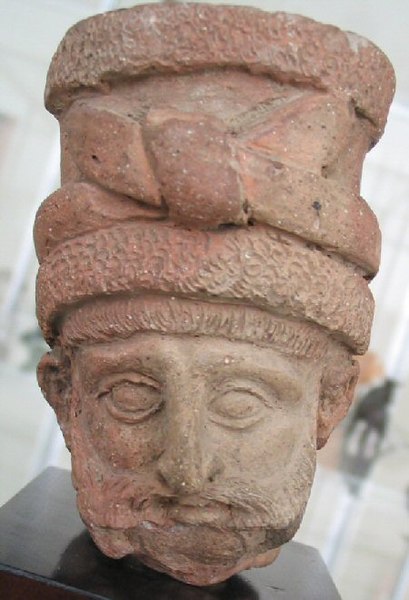Inaros (II), also known as Inarus, (fl. ca. 460 BC) was an Egyptian rebel ruler who was the son of an Egyptian prince named Psamtik, presumably of the old Saite line, and grandson of Psamtik III. In 460 BC, he revolted against the Persians with the help of his Athenian allies under Admiral Charitimides, and defeated the Persian army commanded by satrap Achaemenes. The Persians retreated to Memphis, but the Athenians were finally defeated in 454 BC by the Persian army led by Megabyzus, satrap of Syria, and Artabazus, satrap of Phrygia, after a two-year siege. Inaros was captured and carried away to Susa where he was reportedly crucified in 454 BC.
Inarus, seized by Artaxerxes I, in a seal Persian king and the defeated enemies.
Inaros II fought with the Athenians against the Persian troops in Egypt, and later against Achaemenid satraps Megabyzus and Artabazus, who defeated him.
Libyan soldier, circa 470 BC. Xerxes I tomb relief.
Egyptian soldier, circa 470 BCE. Xerxes I tomb relief.
Megabyzus was an Achaemenid Persian general, son of Zopyrus, satrap of Babylonia, and grandson of Megabyzus I, one of the seven conspirators who had put Darius I on the throne. His father was killed when the satrapy rebelled in 484 BCE, and Megabyzus led the forces that recaptured the city, after which the statue of the god Marduk was destroyed to prevent future revolts. Megabyzus subsequently took part in the Second Persian invasion of Greece. Herodotus claims that he refused to act on orders to pillage Delphi, but it is doubtful such orders were ever given.
Achaemenid nobleman, 520-480 BCE.
Egyptian soldier, circa 470 BCE – Xerxes I tomb relief





